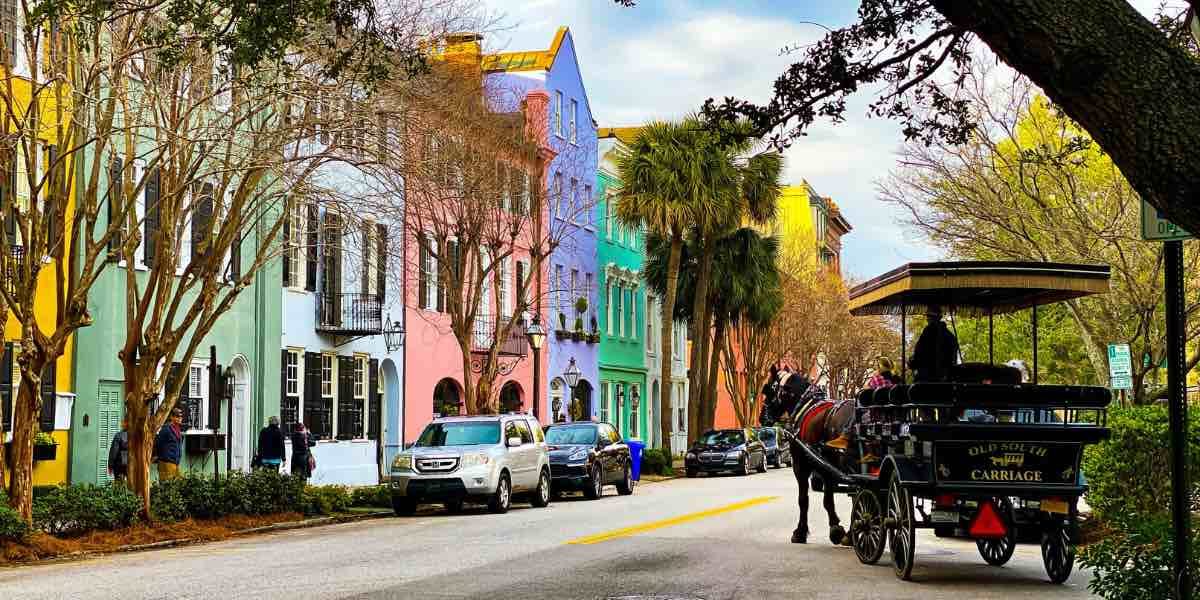Charleston, South Carolina, stands as a place where history and modernity seamlessly coexist. Known for its cobblestone streets, historic mansions, and centuries-old landmarks, the city is a living testament to Southern charm. However, in recent years, Charleston has been embracing a growing trend that incorporates elements of modern Southern living while maintaining the integrity of its storied past. This shift has brought new energy to the city, as traditional Southern living intersects with contemporary design, culture, and lifestyle trends, offering a distinctive blend that reflects the evolving needs and preferences of both residents and visitors.
In exploring Charleston’s modern evolution, it’s clear that the city continues to prioritize preservation while welcoming innovation, making it a dynamic example of how a historic city can adapt without losing its foundational identity. From sustainable design practices to an evolving food scene and a thriving arts community, Charleston’s modernization reveals how it is responding to the changing demands of the 21st century while honoring its historical roots.
Read also: Reviving the Past: The Timeless Appeal of Historic Farmhouses in Modern Living
Preserving Historical Charm Through Adaptation
Charleston’s historic district is widely regarded for its preservation of the past, with well-maintained buildings and streets that have remained largely untouched for centuries. The architecture, which includes Georgian, Federal, and Victorian styles, is a significant aspect of the city’s charm. These architectural elements provide a rich backdrop for everyday life and have become integral to the city’s identity.
While Charleston’s historical character is celebrated and protected, recent developments show how preservation can be balanced with modern functionality. In some of the city’s more vibrant areas, adaptive reuse has become a popular solution. Historic buildings are being thoughtfully renovated into modern spaces such as lofts, office buildings, and boutique shops. This approach allows for the preservation of the city’s architectural legacy while meeting the needs of the contemporary population. Such efforts have helped maintain the aesthetic of Charleston while also integrating necessary modern amenities into its fabric.
The combination of historical architecture with more modern infrastructure is visible throughout the city, particularly in the Upper King Street area, where creative businesses, restaurants, and galleries now occupy restored buildings. These developments reflect Charleston’s commitment to finding a way to maintain its visual history while supporting modern business and lifestyle needs.
Modern Southern Design in Charleston Homes
Charleston’s traditional homes, known for their stately facades and classic southern charm, have increasingly been paired with contemporary design elements, offering a modern interpretation of Southern living. The city’s residential design trends show an appreciation for open floor plans, energy-efficient solutions, and minimalist aesthetics. Yet, elements such as high ceilings, wooden floors, and expansive windows often still reflect Charleston’s historic influences.
Modern Charleston interiors tend to incorporate light, airy spaces that blend old and new. Many homes now feature contemporary furnishings while retaining classic architectural features, such as crown molding and fireplaces. For instance, while modern kitchens and bathrooms may include cutting-edge appliances and eco-friendly fixtures, the exterior of many Charleston homes still evokes the charm of bygone eras. These homes are being updated to align with the preferences of a new generation, with a particular focus on sustainability and energy efficiency, while still preserving the traditional Southern elements that give them their character.
A growing emphasis on sustainable living has also brought eco-friendly building materials into the design of new constructions. Many recent developments incorporate renewable energy sources, rainwater collection systems, and locally sourced materials, providing an environmentally conscious option for homeowners and renters.
Charleston’s Evolving Culinary Scene
Food is a central part of Southern culture, and Charleston has long been known for its traditional Lowcountry cuisine, which includes seafood dishes like shrimp and grits, she-crab soup, and fried green tomatoes. Charleston’s culinary scene, however, has evolved to reflect a broader spectrum of influences. While the city remains deeply rooted in Southern flavors, its restaurants have embraced contemporary trends, offering a fusion of global cuisines alongside traditional fare.
New restaurants in Charleston are increasingly reflecting modern food movements, including the farm-to-table concept, which emphasizes fresh, locally sourced ingredients. Many chefs are reinterpreting classic Southern dishes through modern techniques, creating innovative meals that celebrate the region’s food history while introducing new flavors and ideas. In addition to Southern staples, global influences such as Mediterranean, Asian, and Latin American flavors have been incorporated into Charleston’s restaurants, creating an eclectic dining scene that appeals to both traditionalists and those seeking something new.
The rise of food trucks, casual dining spots, and more health-conscious options also reflects the city’s evolving approach to dining. While fine dining establishments remain prominent, there’s an increased focus on accessible, quick, and fresh meals, catering to a younger, more diverse demographic that is drawn to the city’s growing culinary offerings.
A Focus on Sustainable Living and Green Spaces
As Charleston’s population grows, so does the need for sustainability. In recent years, the city has become increasingly focused on promoting green living and sustainability. Charleston has embraced environmentally conscious practices in areas ranging from urban planning to waste management, with a growing emphasis on green spaces and sustainable development.
New urban developments are being designed with sustainability in mind, incorporating green roofs, solar panels, and water-saving systems. Efforts to preserve public parks and create new green spaces, such as the revitalization of waterfront areas and parks in downtown Charleston, have contributed to a more environmentally friendly urban landscape. These initiatives not only support environmental goals but also enhance the quality of life for residents by providing access to natural spaces for recreation and relaxation.
The city’s growing focus on sustainability also extends to its culinary culture. Many local restaurants emphasize using organic ingredients and sustainable seafood, while a number of local farmers’ markets have flourished. The adoption of sustainable food practices is reflective of a broader shift in Charleston, where both residents and businesses are increasingly focused on creating a more eco-conscious community.
Charleston’s Artistic and Cultural Revitalization
In addition to its culinary and architectural shifts, Charleston’s cultural scene has undergone a revitalization. While the city has long been a center for the arts, with its many galleries, theaters, and cultural institutions, there is now an increasing blend of contemporary art and traditional Southern heritage.
Local galleries and performance venues are increasingly showcasing a mix of contemporary art alongside traditional works, providing a platform for local and international artists. Charleston also hosts several annual festivals and cultural events, such as the Spoleto Festival USA, which celebrate both traditional and modern artistic expression. These events, along with the growing number of art installations throughout the city, illustrate Charleston’s role as an evolving creative hub.
In recent years, there has been a noticeable increase in public art, with murals and sculptures adding vibrancy to city streets. These works often reflect both the city’s historical roots and its forward-thinking, progressive community, showing how Charleston is embracing change while preserving its cultural identity.
The Challenges of Balancing Growth and Preservation
As Charleston continues to modernize, it faces the ongoing challenge of balancing growth with preservation. The city’s historic charm is one of its most attractive qualities, and many residents and visitors alike appreciate the efforts made to maintain and protect the city’s heritage. However, as demand for both housing and business space increases, there is a delicate balancing act between preserving the historical architecture and making room for the growth of modern amenities and infrastructure.
Zoning laws and historical preservation efforts have been key in ensuring that new development does not overshadow the city’s cultural assets. Local policymakers, community organizations, and residents continue to engage in discussions about how to maintain Charleston’s charm while accommodating the needs of a modern population. This ongoing conversation underscores the complexity of balancing Charleston’s historical identity with its modern aspirations.
Read also: Shopping in the South: Top Destinations and Local Gems
The Future of Charleston’s Blend of Tradition and Innovation
Charleston’s evolution as a city that merges its rich historical charm with modern Southern living trends speaks to its adaptability and forward-thinking approach. The city has managed to retain much of its old-world charm while embracing new architectural designs, culinary trends, and cultural shifts that reflect the needs and preferences of a contemporary community.
As Charleston continues to evolve, it will likely remain a place where history and innovation meet. The city’s blend of tradition and progress ensures that it remains a dynamic, attractive destination for those looking for a unique place to live, work, and visit. The future of Charleston lies in its ability to balance these elements, preserving its identity while accommodating the evolving demands of modern life.







